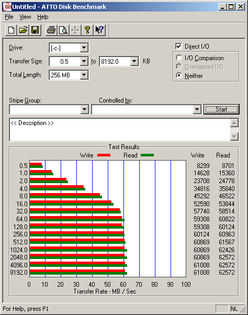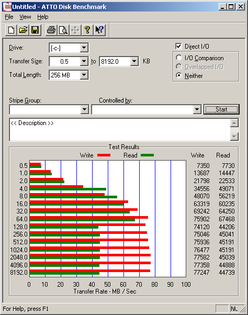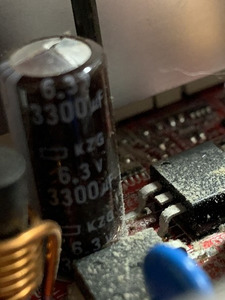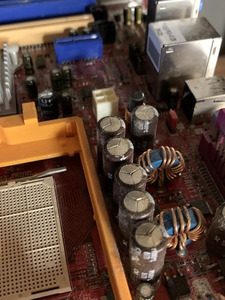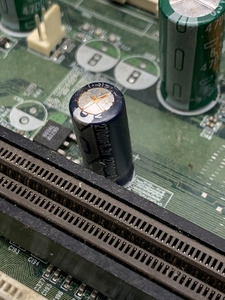Reply 20 of 31, by darry
darry wrote on 2020-09-24, 03:26:You are absolutely right ! […]
The Serpent Rider wrote on 2020-09-24, 02:37:darry wrote on 2020-05-21, 22:08:This is, again, in a P3 1400MHz 512K system with an i815ep/ICH2 ATA66 controller
ICH2 is ATA100 though.
You are absolutely right !
After installing the drivers from the installation CD of my industrial board and getting results consistent with ATA66 , I never bothered checking .
The results were as follows :
atto_ich2_jmd330_860evo.pngAfter reading your post and checking the datasheet, I downloaded and ran IATA_CD.EXE which updated my driver. I then ran a test which gave the following strange results . I also tried running a test with HDTACH, but that crashed the system with the new driver, so I rolled back .
atto_ata100.pngEDIT: I am using the same Jmicron IDE to SATA adapter that I was using with a Promise ULTRA133 TX2 and that was giving me about 90MB/second .
I also tried Intel Application Accelerator (version 2.2 I think) in both DEFAULT UDMA5 and forced UDMA4 modes . The same low read speed for larger block sizes was apparent and HDTACH also crashed the system . I also got some nice crosslinked files (that'swhat backups are for, 🤣).
I do not know if this is due to the Intel drivers not liking my IDE to SATA converter or my Samsung 860 EVO SSD or something else .
What I do know is that the Intel base inf driver that uses ESDI_506.PDR (patched for LBA48 using BHDD31) works fine at UDMA4 speeds with my adapter and SSD . It has normal read speeds, does not crash when using HDTACH and does not cause DATA corruption .
EDIT: Anybody have an idea why the base Intel driver that uses ESDI_506.PDR only does UDMA4 in my setup ?
EDIT2: I ordered a Startech IDE to SATA adapter, reportedly based on a Sunplus SPIF223A . I will see if that behaves differently .
